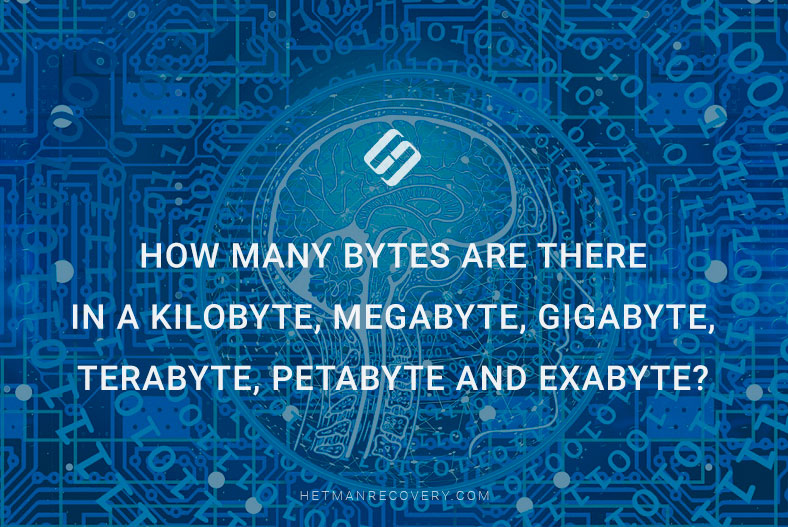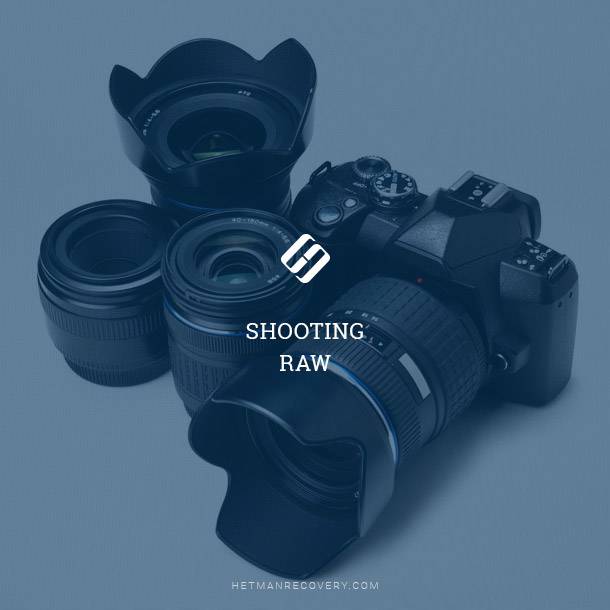Understanding Data Sizes – Explained from Bytes to Exabytes
Unlocking the Mystery of Data Sizes: Learn How Many Bytes Are in a Kilobyte, Megabyte, Gigabyte, Terabyte, Petabyte, and Exabyte! Curious about data sizes and how they’re measured? In this informative article, we’ll delve into the world of bytes, kilobytes, megabytes, gigabytes, terabytes, petabytes, and exabytes. Understanding these terms is essential for anyone dealing with digital data storage and management. Whether you’re a novice or an expert, this article will provide valuable insights into the scale of digital information.

Units of measure for digital information
As anything that can be counted, information should have it own unit of measure recognized by hardware manufacturers and comprehensible for all users. Such unit of measure should represent the quantity of data so that it can be arranged properly, and a suitable type of storage device can be selected to save it.
You must have heard terms like gigabytes, terabytes or petabytes before, and you might not pay too much attention to what they mean. But what are the real storage figures behind them? Let’s take a closer look and see what storage sizes are out there.
Such words as byte, megabyte, gigabyte, petabyte and others are used to denote the capacity of a digital data storage. Sometimes, people confuse them with such similarly-looking terms as megabit and gigabit. It is useful to know the meaning behind each term and how they correlate with each other, when comparing the storage capacity of hard disks, tablet PCs, and flash memory devices. It is just as useful to understand the main characteristics when comparing rates of data transmission when you work with an Internet connection or shop for some network equipment.
| Unit of Measurement | Abbreviation | Size (in bytes) | Application |
|---|---|---|---|
| Byte | B | 1 byte | Minimal data storage unit |
| Kilobyte | KB | 1,024 bytes | Texts, small files |
| Megabyte | MB | 1,048,576 bytes (1024 KB) | Documents, images |
| Gigabyte | GB | 1,073,741,824 bytes (1024 MB) | Videos, programs |
| Terabyte | TB | 1,099,511,627,776 bytes (1024 GB) | Hard drives, databases |
| Petabyte | PB | 1,125,899,906,842,624 bytes (1024 TB) | Data centers |
| Exabyte | EB | 1,152,921,504,606,846,976 bytes (1024 PB) | Global information systems |

📚 How to Create a RAID Array. Building a PC and Selecting Hardware for RAID 5 🖥
Bits, bytes and kilobytes
First of all, let’s analyze the units of measure at the basic level that create the base for storing data in a digital form.
As you know, all digital information is stored on personal computers and transmitted via digital networks as a binary code, using the symbols «0» and «1». The smallest unit of measure for data is a «bit» that corresponds to either digit of the binary code («0» or «1»). When we refer to a bit as a unit of measure (especially when it is a part of a larger word), we use the lowercase letter «b». As well as all other derived units of measure, bit can be used with prefixes to form larger units. For example, a kilobit is a thousand bit, and a megabit is a thousand kilobit.
The next one on the list of measurements for digital data is a «byte», shortened to «B» – an aggregate unit for storage and processing of digital data which consists of eight bits and is used to save one text symbol. Usually, a byte is shortened to capital letter «B». For example, it takes about 10B to store an average word.
By using prefixes to form other derivative units following «byte», we can create such words as «kilobyte» («KB»), which is the equivalent of «1,024 bytes» of data or «8,192 bits». The name «kilobytes» is shortened to «KB», and storing a single page of standard text usually requires about «10 KB».
Now that you have a basic understanding of the basic units of measure for digital data, we can move on to larger units that you will certainly encounter when buying various computing devices.
Megabytes («MB»)
Currently, one of the smallest units of measure used in data storage is a megabyte («MB»), which consists of «1,024 KB». Back in the late 1990s, capacity of storage devices such as hard disks for computers were measured in megabytes. Here are several examples of how much stuff can be stored in terms of megabytes («MB»):
«1 MB» = About four hundred pages in a book.
«5 MB» = A typical four-minute-long song in «mp3» format.
«650 MB» = A «CD-ROM» containing seventy minutes of music.
Note: Beginning with this paragraph, you will see the value «1024» here and there. As a rule, after we start dealing with amounts of data higher than the kilobyte stage, every next value of a unit of measure increases in arithmetic progression and is divisible by «1024» if compared to the preceding value. For example, «1,024 bytes» – 1 kilobyte, «1,024 kilobytes» – 1 megabyte, and so on.

⚕️ Tools to Check Hard Disk and Repair Bad Sectors in 2020 ✔️💻
Gigabytes («GB»)
Following the principle described above, one gigabyte («GB») contains «1,024 megabytes (MB)». A gigabyte («GB») is a widespread unit of measure when it comes to discussing storage device capacity. While modern internal hard disks («HDD») measure their capacity in terabytes, some types of storage devices such as «USB drives» and solid-state drives («SSD») are still about gigabytes.
Here are some real-life examples, how much data can be stored in gigabytes («GB»):
«1 GB» = About a thousand books, depending on their format.
«4.7 GB» = One optical «DVD-ROM».
«7 GB» = The amount of data used when watching a «Netflix Ultra HD video» stream.
Terabytes («TB»)
Applying the same principle as before, you can figure out that a terabyte («TB») consists of «1,024 gigabytes (GB)». Presently, terabyte is the most widespread unit of measure for digital data, especially when talking of standard capacity for hard disks («HDD»).
Here are some examples of how much information can be stored in a terabyte:
«1 TB» = Two hundred thousand typical five-minute-long songs; three hundred and ten thousand photos and images; five hundred hours of videos or movies.
«10 TB» = The amount of data received by «Hubble Space Telescope» in a year.
«24 TB» = The amount of video data uploaded to «YouTube» in a single day in 2016.

💽 How to Fix a Pen Drive or External Hard Disk Not Showing Up? 💻
Petabytes («PB»)
Just like in the previous examples with units of data measure, one petabyte («PB») contains «1,024» terabytes («TB»), or about a million gigabytes («ГБ»). If the current trends for development of computing technologies and new materials remain, petabytes will soon replace terabytes as the standard unit of capacity for consumer-grade storage devices of the nearest future.
Real examples of storing digital data measured in petabytes («PB»):
«1 PB» = Five hundred billion pages of standard text (or data contained in seven hundred forty-five million «floppy disks»).
«1.5 PB» = Ten billion photos and images in «Facebook» social network.
«20 PB» = The total amount of data processed by «Google» every day in 2008.
Exabytes («EB»)
Hence, the unit of measure for digital data in the future should be an exabyte, which can be understood, logically, as a total of «1,024 petabytes». The world’s tech giants such as «Amazon», «Google» and «Facebook» (that are already processing incredible amounts of data) seem to be the only companies concerned about storage facilities of that size. At the consumer level, though, some (but not necessarily all) file systems used by present-day file systems are theoretically limited by exabytes.
Here are some real examples of storing digital data measured in exabytes («EB»):
«1 EB» = Eleven million videos in the latest high-definition standard – «4К».
«5 EB» = All the words ever pronounced by people.
«15 EB» = A total of all data calculated and processed by «Google».
Certainly, this list can be continued. The next three possible items to denote even larger amounts of digital information (just in case you’re interested) are zettabyte, yottabyte and brontobyte. Frankly speaking, though, even with exabytes you get such an incredible amount of space to store all kinds of data that there is little practical use for it these days.
Now that you know the main units to measure digital data and how much stuff each of them can store, it will be easier to find your way through the variety of storage devices available at the moment, and select the one that suits your needs best.





